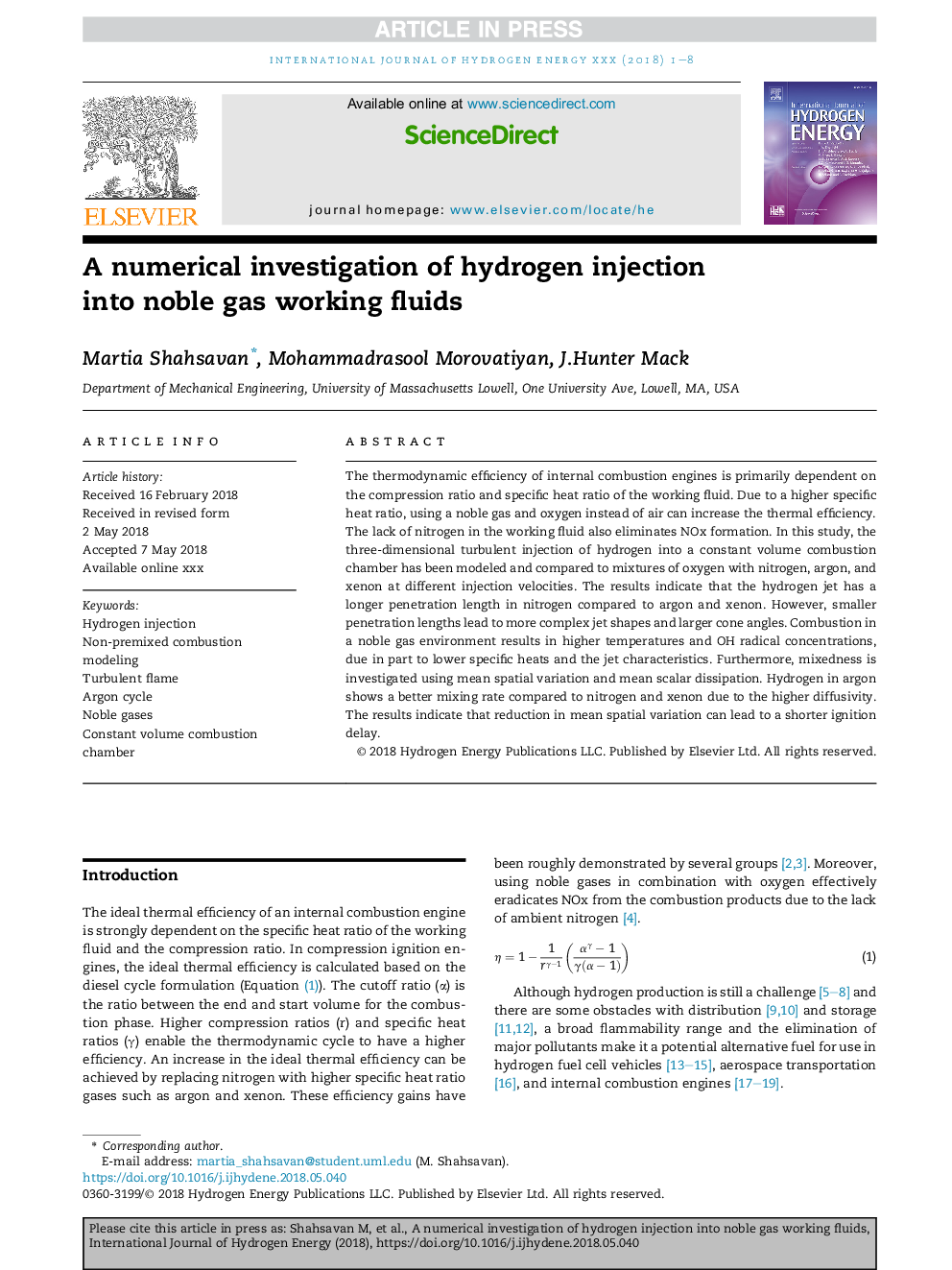| Article ID | Journal | Published Year | Pages | File Type |
|---|---|---|---|---|
| 7705596 | International Journal of Hydrogen Energy | 2018 | 8 Pages |
Abstract
The thermodynamic efficiency of internal combustion engines is primarily dependent on the compression ratio and specific heat ratio of the working fluid. Due to a higher specific heat ratio, using a noble gas and oxygen instead of air can increase the thermal efficiency. The lack of nitrogen in the working fluid also eliminates NOx formation. In this study, the three-dimensional turbulent injection of hydrogen into a constant volume combustion chamber has been modeled and compared to mixtures of oxygen with nitrogen, argon, and xenon at different injection velocities. The results indicate that the hydrogen jet has a longer penetration length in nitrogen compared to argon and xenon. However, smaller penetration lengths lead to more complex jet shapes and larger cone angles. Combustion in a noble gas environment results in higher temperatures and OH radical concentrations, due in part to lower specific heats and the jet characteristics. Furthermore, mixedness is investigated using mean spatial variation and mean scalar dissipation. Hydrogen in argon shows a better mixing rate compared to nitrogen and xenon due to the higher diffusivity. The results indicate that reduction in mean spatial variation can lead to a shorter ignition delay.
Related Topics
Physical Sciences and Engineering
Chemistry
Electrochemistry
Authors
Martia Shahsavan, Mohammadrasool Morovatiyan, J.Hunter Mack,
